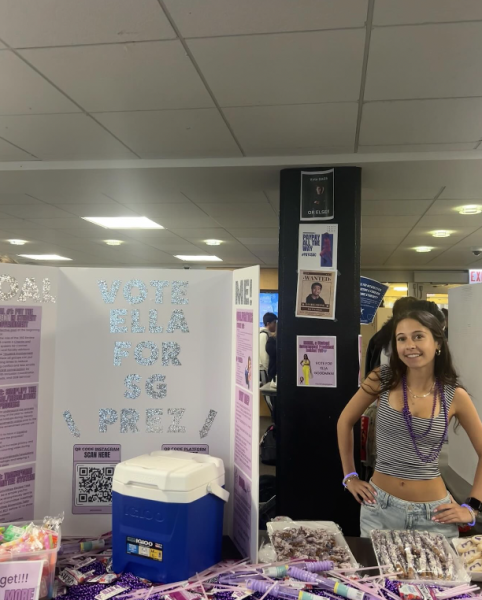Connecting the Roots of Newspaper Past and Present
The History of “The Parker Weekly”
It was a Sunday afternoon in the 1980s. Seated in the ripped, pleather seats of an ancient 1970s Chevy Nova covered with grey duct tape, four ambitious journalists made their way to the Southtown Economist Plant in Englewood, Chicago. The radio blasted Bruce Springsteen’s gravely voice surrounded by an orchestra of violins and the sharp tone of the electric guitar. Those four strident journalists were carrying on a sacred duty: developing “The Parker Weekly.”
David Shayne, class of 1952, became Editor In-Chief as a junior, alongside sophomore Muller Davis. According to Shayne, he served as Editor In-Chief in the 1949-1950 school year. “Previously we took printing in a shed next to the school,” Shayne said, “where we learned how to set-type individual letters that we placed in a frame and printed from it,” Davis said. This was a laborious task that forced “The Parker Weekly” of that year to only be released on occasion as opposed to the present day, when the newspaper is produced monthly.
Soon a friend of Davis’s parents suggested that they type the articles, paste them on cardboard, and finally send them to a printer who would photograph and print the articles.
When that process became routine, “The Parker Weekly” was released almost weekly, but the layout wasn’t aesthetically pleasing. The father of Andy Kner, class of 1953, who served as the Art Editor for the “The Parker Weekly” and went on to become the Art Editor of “The New York Times Magazine”, designed the Parker logo that is used today – and which “The Parker Weekly” introduced during the time when Shayne served as the Editor in Chief.
“The process was complicated, painstaking, and technologically backwards,” Editor-in-Chief for the 1984-85 school year Peter Marks said. “Articles were written on special typewriters onto special paper with format coding written into the body of the text.”
Adam Shayne, class of 1983, served as Editor In-Chief in the 1982-83 school year. “We used to type articles on electric typewriters,” he said. “They were typed on special lined paper that could be scanned into a computer when we arrived at the Southtown Economist plant.” “The Parker Weekly” staff would, according to Shayne, spend most of Sunday at the plant scanning the articles and printing them out into columns.
The process had evolved significantly since the early 1950s, but still posed a challenge to its staff members. Not a substantial number of students owned personal computers in the 1980s, according to Marks. Staff members would go to the Southtown Economist Plant to develop the newspaper that occupied much weekend time.
During the period in which Peter Marks was an Editor In-Chief of “The Parker Weekly,” the production evolved remarkably. Printing changed when the initial method was replaced with a newer one that helped push the newspaper closer towards digital production.
After he was elected Editor In-Chief, Marks set up a meeting using his mother’s connections, which led to a solution that cut the frustrations of printing and publishing, but incorporated arts-and-crafts — and was more expensive than the prior methods used.
In Shayne’s freshman year, the name of the paper was briefly changed to “The Fortnightly” because the newspaper came out just about biweekly. But the name “The Parker Weekly” was a tradition, so many students disliked the new name, and the newspaper changed it back. Shayne also initiated a tradition in which some staff members (exclusively the members who rode in his car) would write a log of their adventures on the way to the Southtown Economist.
Adam Smoler, class of 1997, served as Editor In-Chief as a junior during the 1995-96 school year when some of the most profound technological advances occurred. One was desktop publishing. “The Weekly” began using Adobe InDesign and exporting the newspaper into PDFs and emailing it, according to Smoler. But, the printers only allowed for printing pages 8.5” X 11” when the newspaper itself had to be roughly 11” X “17”. At the Chicago Law Bulletin, “The Weekly” used exacto knives to put the paper together, and the facility helped photograph and reprint them.
The manufacturing process of “The Parker Weekly” continues to morph, and its future excites its current staff members.







